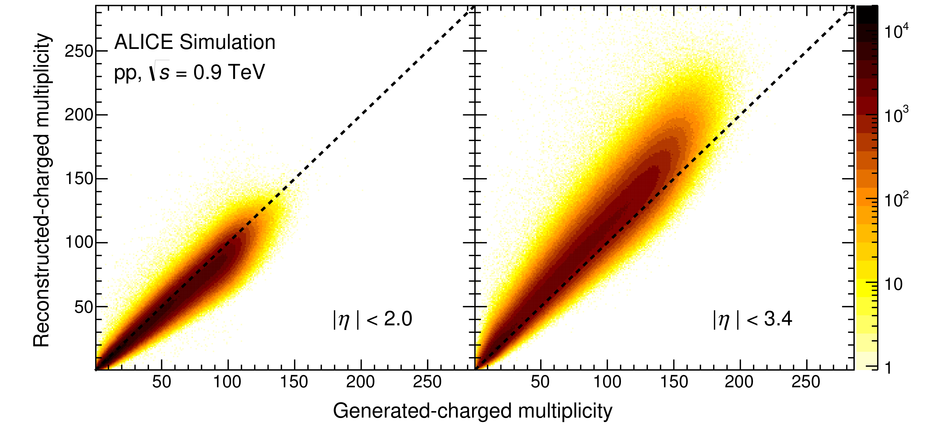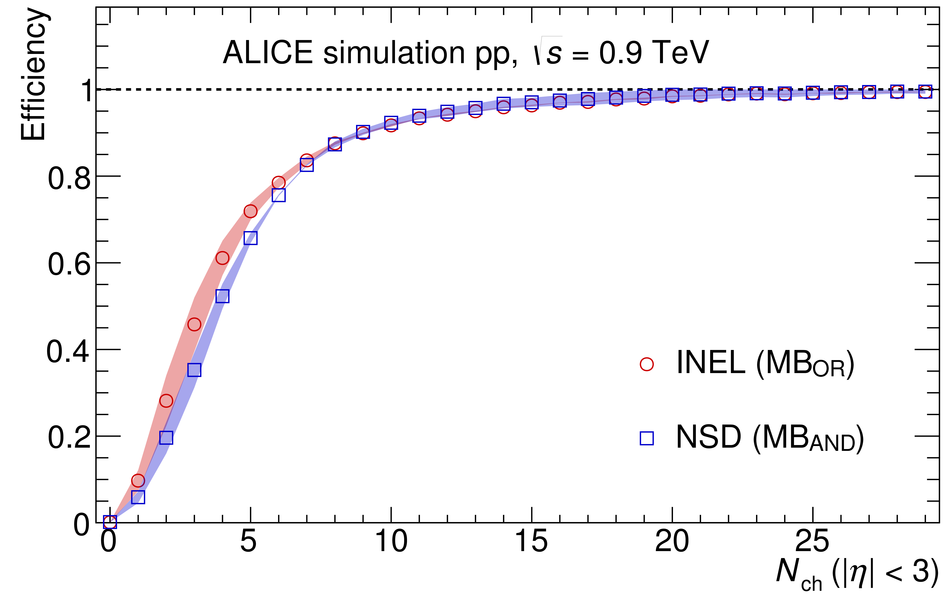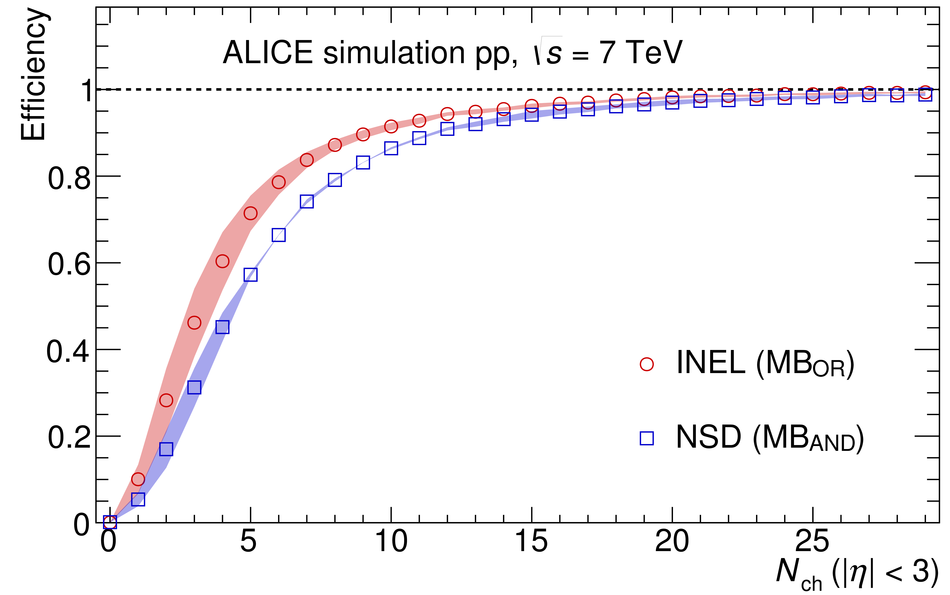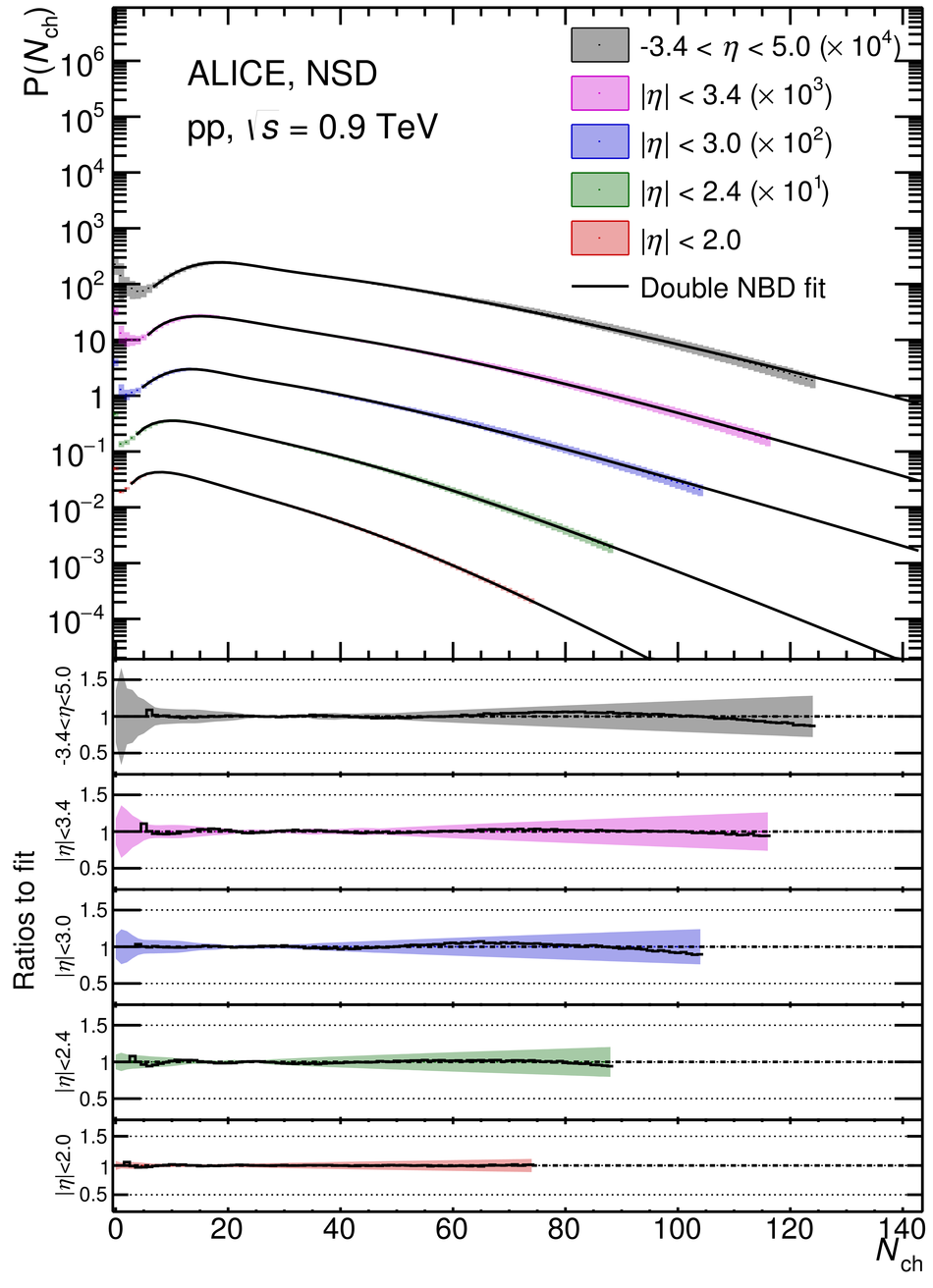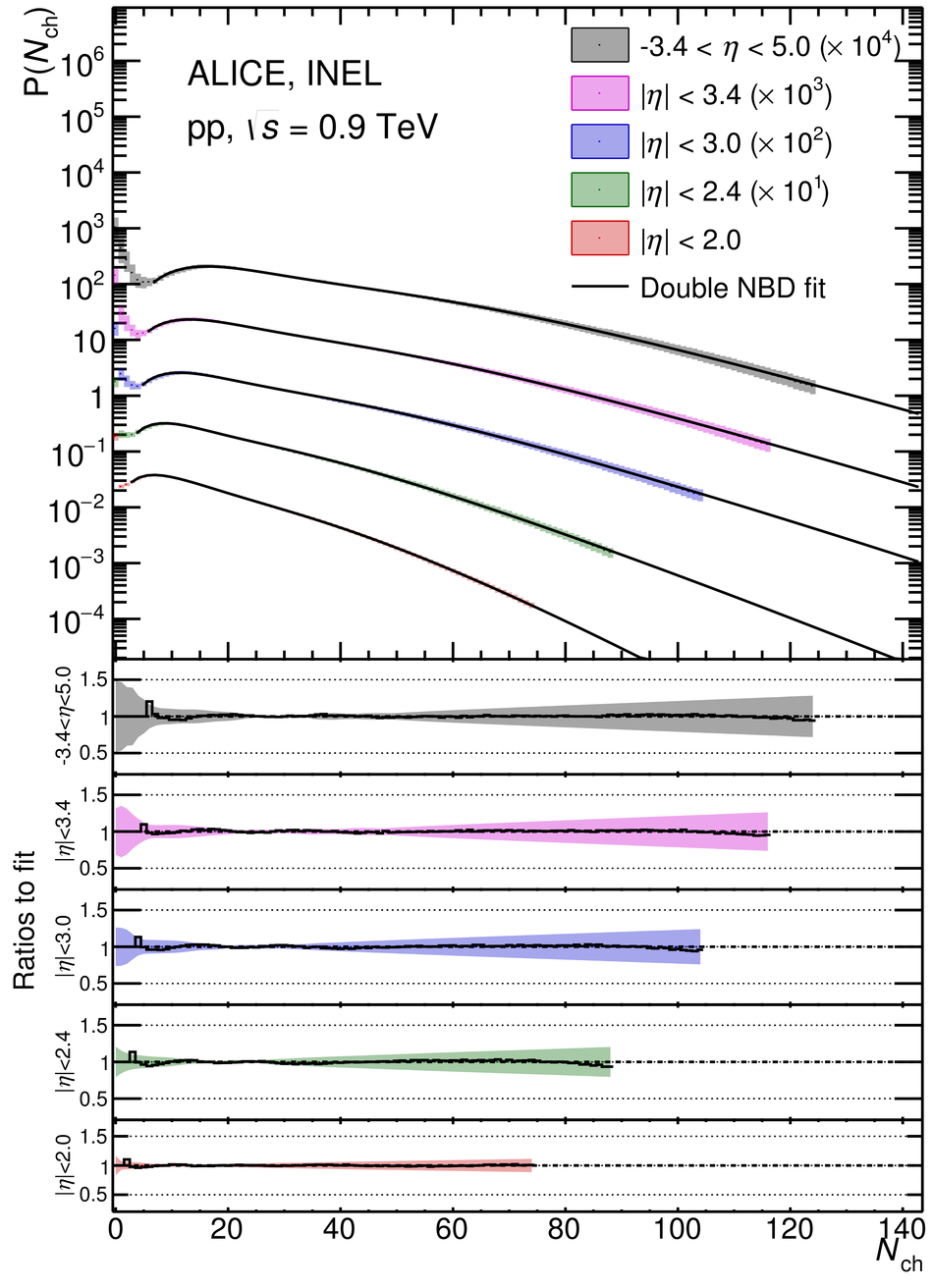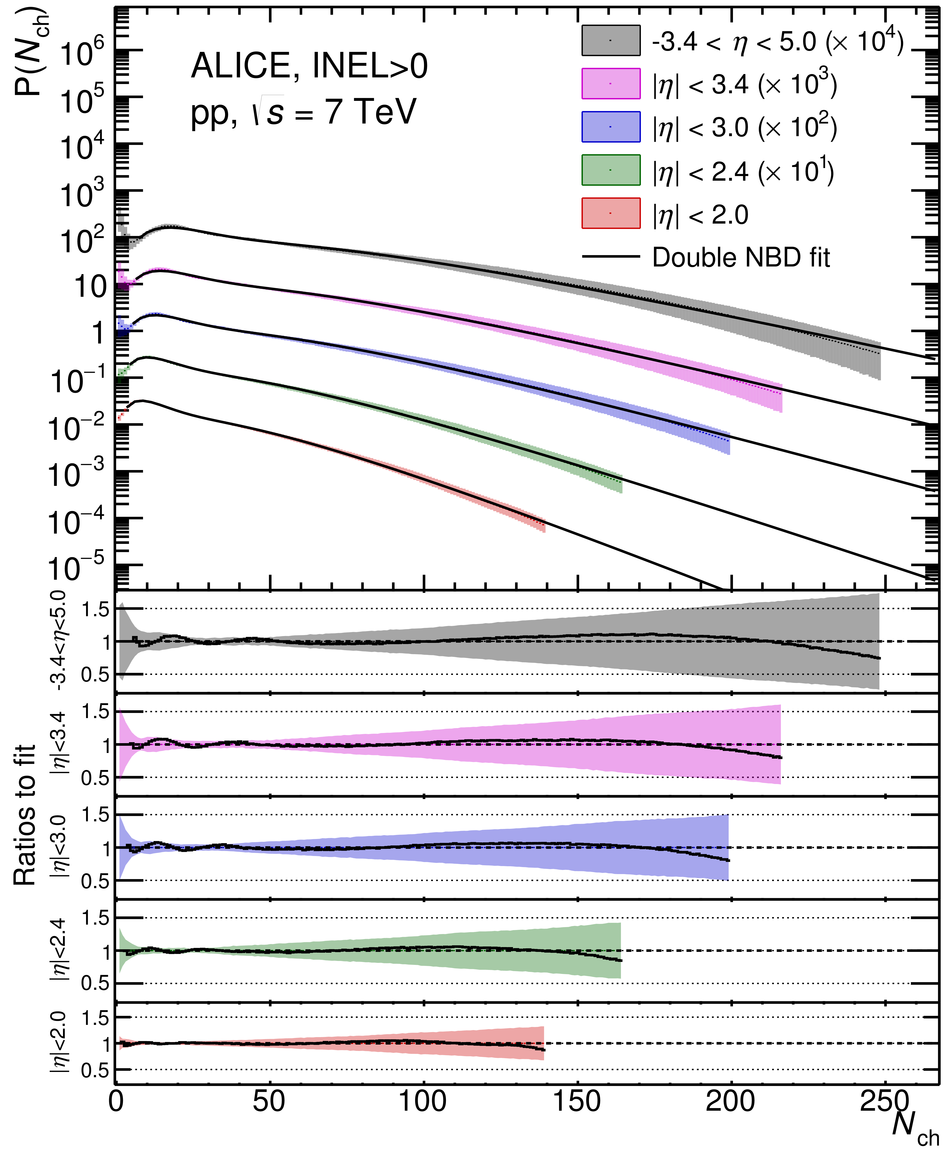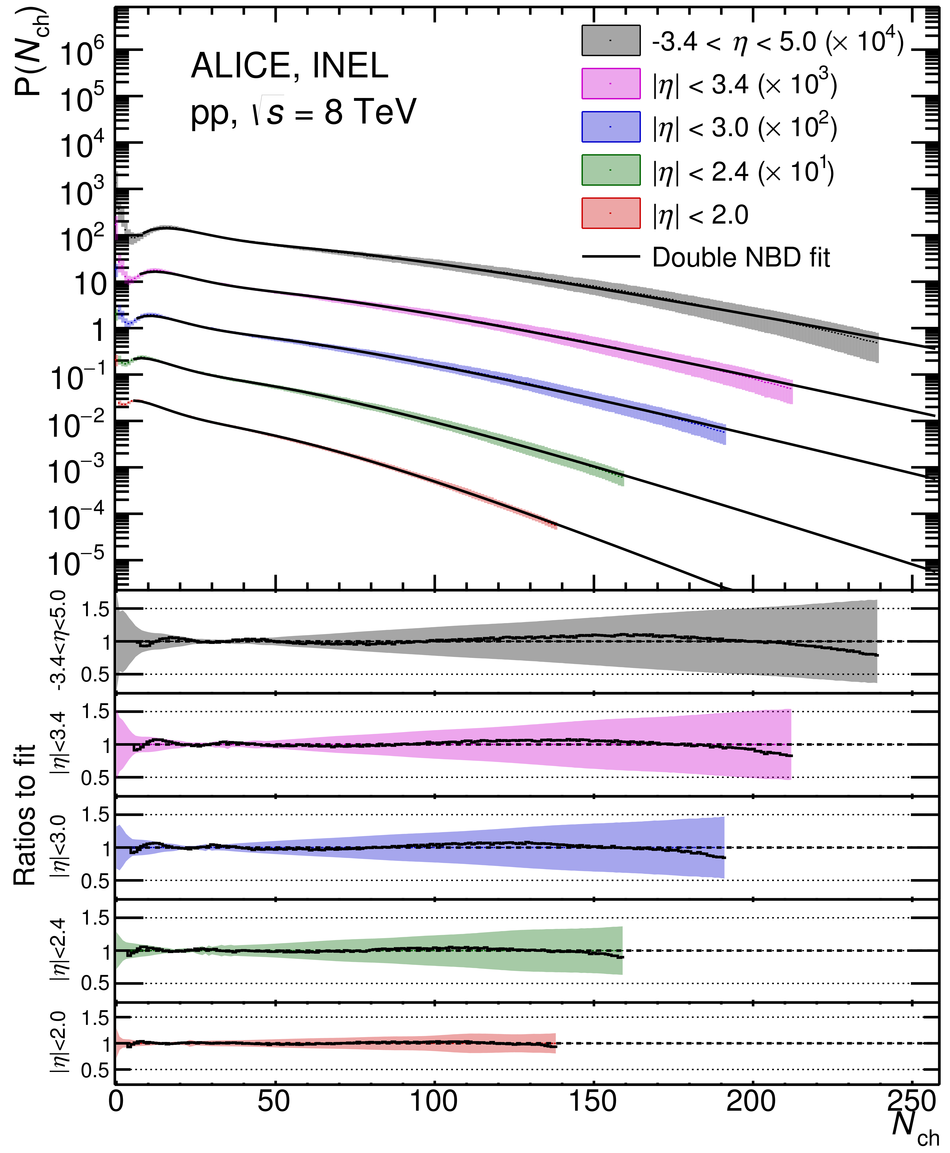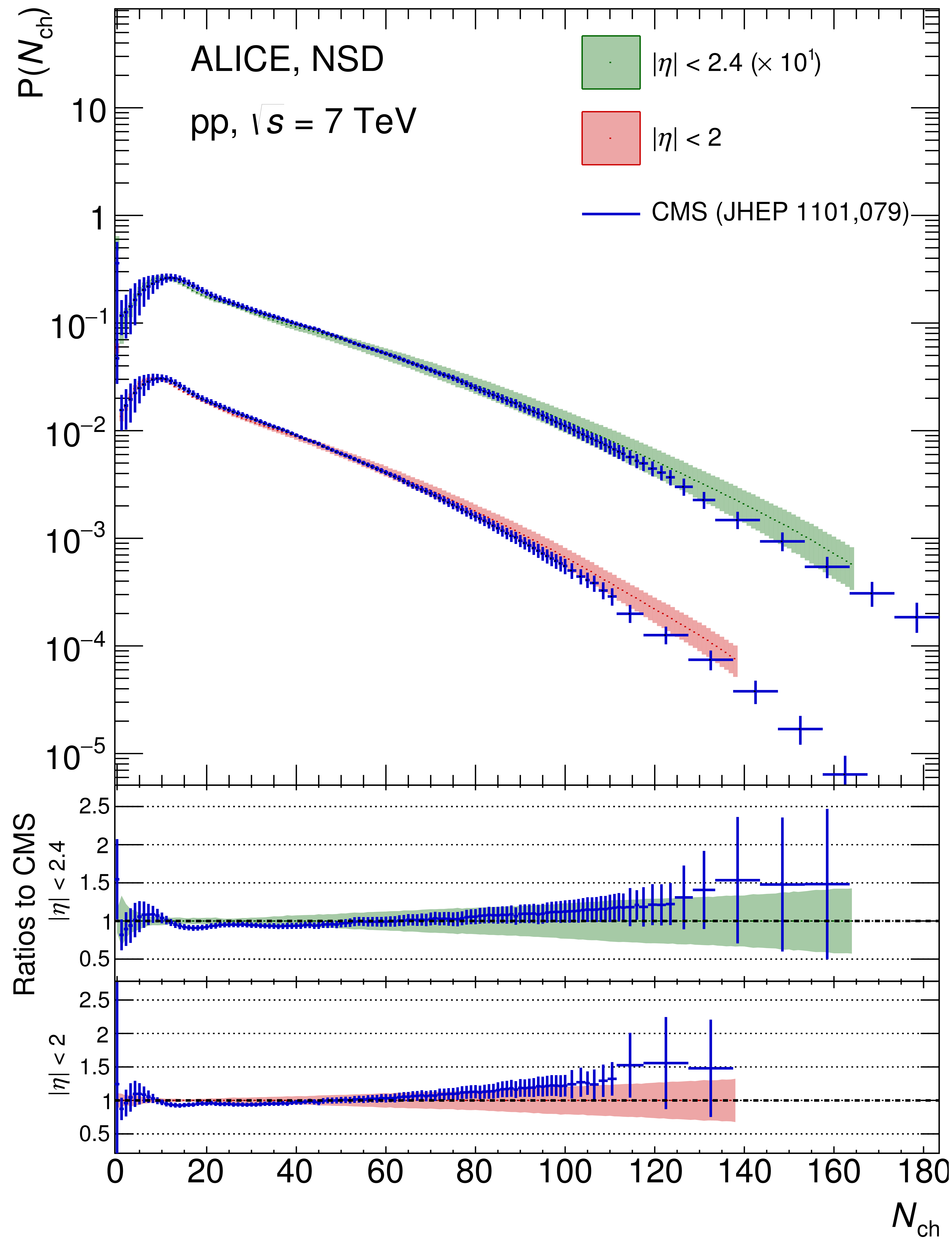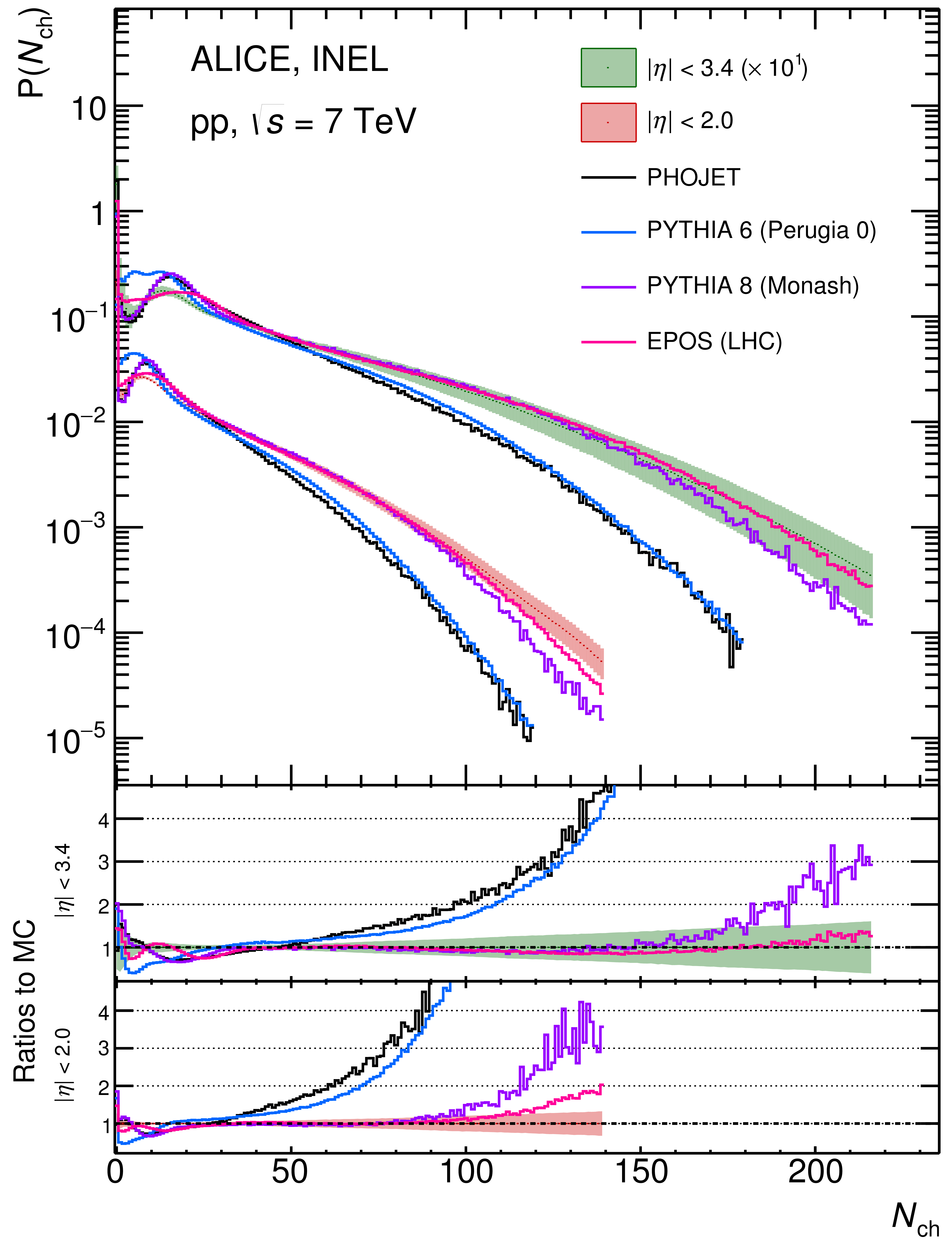We present the charged-particle multiplicity distributions over a wide pseudorapidity range ($-3.4<~\eta<~5.0$) for pp collisions at $\sqrt{s}=$ 0.9, 7, and 8 TeV at the LHC. Results are based on information from the Silicon Pixel Detector and the Forward Multiplicity Detector of ALICE, extending the pseudorapidity coverage of the earlier publications and the high-multiplicity reach. The measurements are compared to results from the CMS experiment and to PYTHIA, PHOJET and EPOS LHC event generators, as well as IP-Glasma calculations.
Eur. Phys. J. C 77 (2017) 852
HEP Data
e-Print: arXiv:1708.01435 | PDF | inSPIRE
CERN-EP-2017-192

